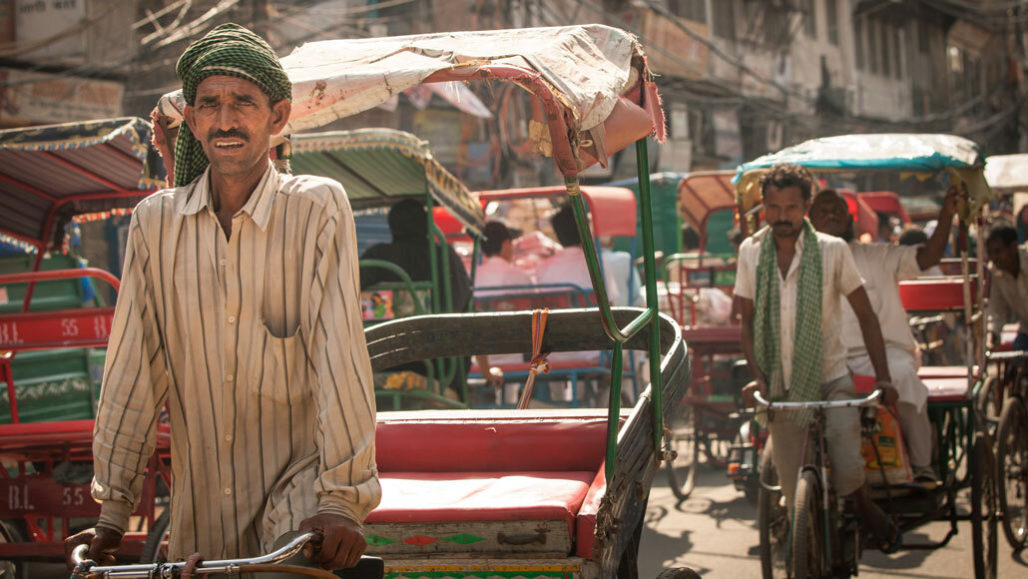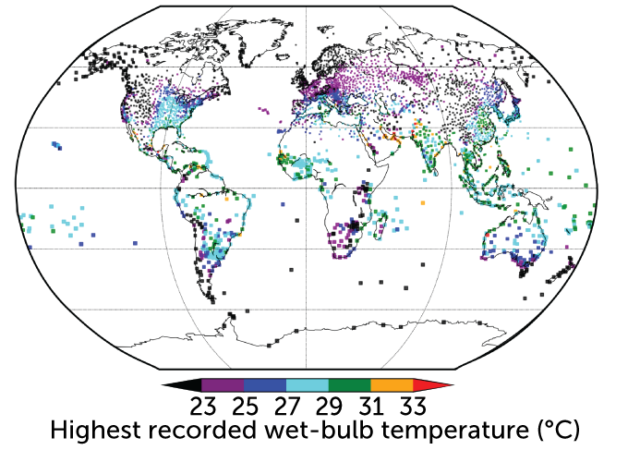Deadly heat: Expected by century’s end, it’s here already
Dangerously hot and humid days are on the rise, data show

Dangerous hot and humid conditions are plaguing places like New Delhi in India (shown). A new analysis of global weather station data finds that such extreme events have been increasing over the last 40 years.
ErmakovaElena/iStock Editorial/Getty Images Plus
When temperatures rise, beads of sweat exit our pores. Evaporating sweat releases energy that cools the skin and keeps our bodies from overheating. But that sweating superpower has a limit. When it gets too hot and humid, sweat can no longer cool our skin by evaporating. Scientists had thought that this temperature extreme occurred rarely, if ever. In fact, it’s been happening more and more, a new study finds.
That sweat limit is hit when a bulb thermometer wrapped in a wet towel (a measure of heat and humidity known as “wet-bulb” temperature) reads 35º Celsius, or 95º Fahrenheit. Even the fittest people with unlimited water would probably die after a few hours in this heat.
Computer models of climate had suggested as the globe warms, such high wet-bulb temperatures might become more common toward the end of the century. In affected regions, hundreds of millions of people could be threatened with dying heat.
And it now turns out many people won’t have to wait till the end of the century.
In the last four decades, this temperature limit has been briefly surpassed at least a dozen times. It’s been happening at sites along the Persian Gulf and Indus River Valley in India and Pakistan. Slightly lower, but still dangerous, temperatures are now familiar across elsewhere, too. They’ve been showing up in large parts of the Middle East, South Asia and the U.S. Gulf Coast.
Researchers reported the findings May 8 in Science Advances.
Matthew Huber is a climate scientist at Purdue University in West Lafayette, Ind. “We expect these extreme wet-bulb values to be rare, but to become more common as the world warms,” he says. “It’s disturbing to see it happening,” says Huber, who wasn’t involved in the study.
Feeling the heat
Colin Raymond is a climate scientist at NASA’s Jet Propulsion Laboratory. It’s in Pasadena, Calif. He and his team scoured data from 4,576 weather stations across the globe. They looked for extreme wet-bulb temperatures between 1979 and 2017. And a clear pattern emerged.
These extremes have been showing up along coasts where warm, moist air from the ocean collides with hot air on land. In South Asia, such extremes are fueled by monsoon winds.
Maximum humid heat, or ‘wet-bulb’, measurements, 1979–2017

So far, temps at or beyond the human limit have been rare and confined to an hour or two at hot spots along the Persian Gulf. One such hotspot is a weather station at Abu Dhabi International Airport. Nearly 1.5 million people live in Abu Dhabi, the capital of the United Arab Emirates.
A region’s heat index is how hot some really humid place feels. Raymond’s team tracked where wet-bulb temperatures hit 33º C. This roughly translates to a heat index of 60º C or 139º F! This is just shy of the human limit, he notes. Still, he adds, it is “much hotter and more humid than many of us have experienced.”
The analysis found that 40 years ago, such events happened once or twice a year. Now, such oppressive moist-heat occurs 25 to 30 times a year. “There is a doubling or more of these extreme events over four decades,” he reports.
If carbon emissions aren’t curbed in the coming decades, these fairly rare extremes will become more common, Raymond’s team says. They would be unbearable without technology such as air conditioning. And they make working outdoors nearly impossible.
“We may have to rethink how to live in a place that’s experiencing conditions outside of what we’ve evolved to experience,” Raymond says.







